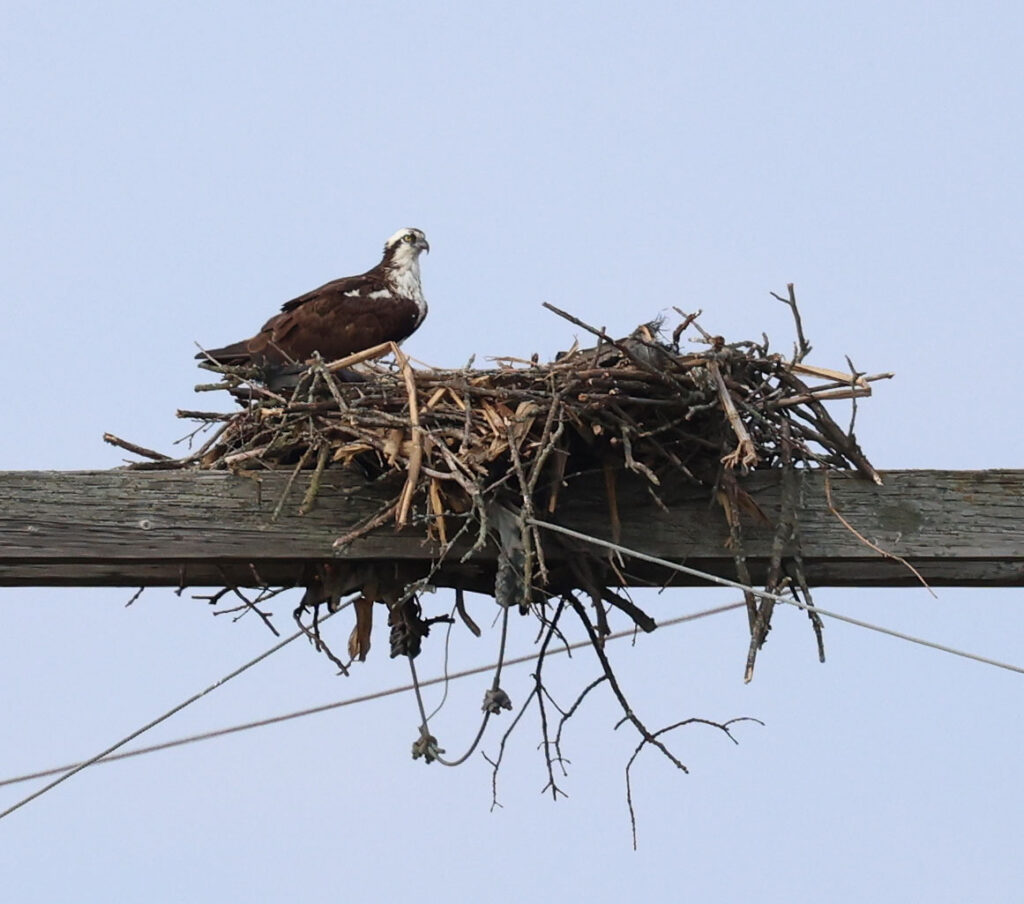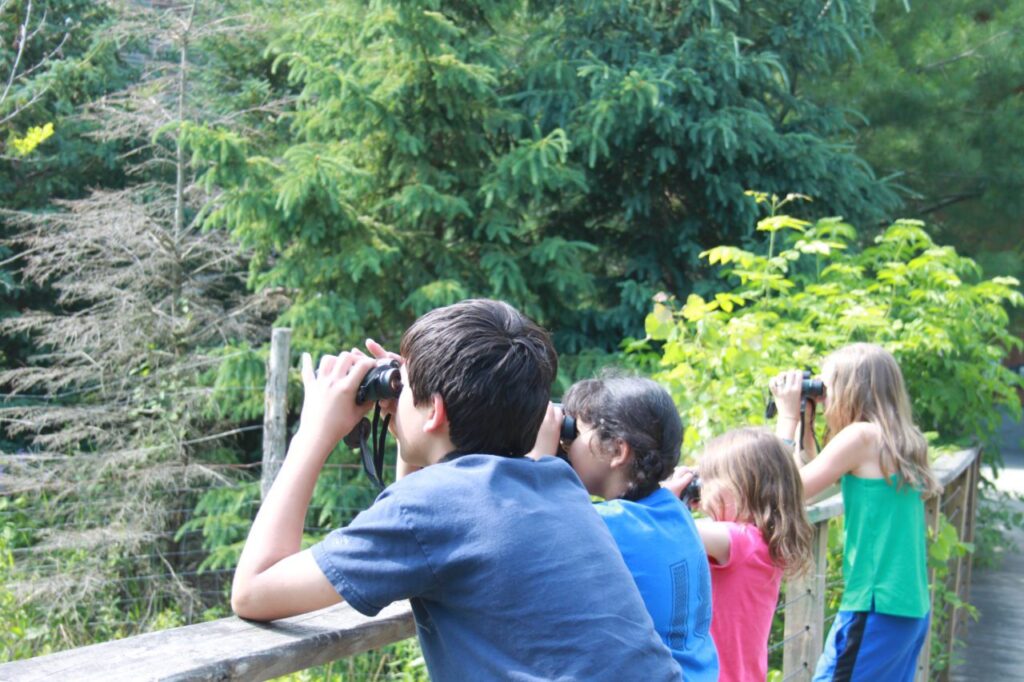10 Questions With Mike Bergin of 10,000 Birds
Below is our interview with Mike Bergin of 10,000 birds (amongst many other awesome sites). Mike has some great insight into birdwatching and it was a pleasure getting to know him!
Hope you enjoy the interview!
1. When did you first become interested in bird watching and what has kept you interested?
Even though I grew up in the Bronx, I’ve always had a general interest in nature, the outlet for which was hiking. During one spring hike in 2003, I noticed an unfamiliar yellow bird fly across the trail. A little later, a different but equally interesting yellow bird flew by. Then came a third unidentifiable yellow bird. It was about that time that I decided I better pick up a field guide. From that point, it was only a matter of time until I was hooked. Not coincidentally, that was also the end of my hiking career!
Not long after I started birding, I began blogging about birds at 10,000 Birds. As an educator, one of the most powerful lessons I’ve picked up over the years is that we learn a lot by teaching others. So 10,000 Birds was my way of sharing what I was learning as a beginning birder. After nine years, my knowledge of birds and birding has grown quite a bit. More important, through the blog, I’ve connected with the international birding community. Meeting birders across the country and world has been as interesting to me as seeing new birds. So for me, birding remains fresh because I so enjoy meeting nature lovers and bird watchers.
2. Where are you located and what species do you spend most of your time observing?
I moved to Rochester, NY in 2008 and love places like Montezuma NWR and the areas around Lake Ontario. But believe it or not, I really miss my home of New York City for birding. NYC offers some of the best opportunities to see birds all year round at hotspots like Jamaica Bay, Prospect Park, and the mighty migrant trap Central Park.
3. Are you active in a local or online birding community?
I’m not much of a joiner on the local level, but very active online. 10,000 Birds has always been one of the world’s most popular birding and nature blogs. We’ve grown over the years from a single author blog to a partnership to a site featuring exceptional writers from all over the globe. I feel privileged to be at one of the hubs of the online birding community.
I’m also the founder of the Nature Blog Network (http://natureblognetwork.com), which at this moment has almost 2200 members. The blogs on the Nature Blog Network cover every aspect of nature blogging including birds, bugs, plants, herps, hiking, photography, and various ecosystems.

4. What is your favorite bird or your favorite birding moment? It doesn’t necessarily have to be anything rare, just something meaningful.
As you know, birding is filled with memorable moments. As an active and ardent lister, I tend to cherish the first times I’ve seen most species. But one of my most memorable birding moments combines many of my favorite aspects of this hobby: rare birds, great people, and exotic locations.
Back in 2009, I participated in my second Guatemala Birding Encounter. All of my birding experiences in Guatemala have been highly memorable in good ways, not just for the amazing birds but also for the terrific birders from all over the world. The high point (literally and figuratively) of that year’s encounter was a hike up Volcán San Pedro at Lake Atitlán to see the legendary Horned Guan. This trip has broken so many bird watchers that it’s often referred to as the San Pedro Death March, but the promise of one of the coolest and most coveted birds in the Americas is too great to pass up. So there we were, a mob of bird-thirsty birders led by an outstanding guide, Hugo Haroldo Enriquez Toledo of Operador Latino. We struggled to the highest elevations, buoyed by only a hope to glimpse this epic tree turkey, but our reward was spotting an entire troupe of Horned Guans feasting on figs. What a moment! (Read the full account here – http://10000birds.com/getting-the-guan.htm)
5. Do you have a competitive birding interest ie a year list or life list?
Yes, I really enjoy keeping both a life list and an ABA list. I tried keeping year lists for a few years but found that I didn’t have the time to fully indulge in both the record keeping and the bird chasing!
Lists are enjoyable for many reasons, but one of the hassles of listing is deciding how you are going to maintain your lists. Until very recently, I’ve been keeping an Excel sheet of first sightings and a Moleskine notebook for certain trip lists. However, my friend Nate Swick convinced me to adopt eBird. I’ve documented the ordeal that moving one’s records to eBird entails (http://10000birds.com/the-agony-and-ecstasy-of-surrendering-to-ebird.htm) but can admit, now that I’m on the other side, how many benefits eBird listing provides. I advise listers to make the move sooner rather than later!

6. What is your favorite place you’ve been bird watching? This includes a birding vacation or even your own backyard.
There are all kinds of bird watchers in the world. Instead of a yard birders or patch birders, I am definitely a world birder in that my interest in birding is inextricably linked with my interest in travel. There are few things I enjoy more than seeing a new bird in a new place. Consequently, I have tons of favorite birding places. Some of my faves from the last few years are Ecuador, Panama, and Trinidad. In the U.S., I love birding the warmer states like Texas, Arizona, California, and Florida.
7. What is the farthest you have traveled to see a particular bird?
As I mentioned, I’m thrilled to travel very far to see a bird, hopefully many birds. South America is the farthest I’ve traveled for birding. One sighting I’ll always remember was that of the Rufous-bellied Seedsnipe (photo here – http://10000birds.com/back-from-ecuador.htm) in Ecuador. My friend Renato Espinoza of Pululahua Hostal brought me and David Ringer to Papallacta Pass, a well-known birding hotspot in the high Andes. At roughly 14,000 feet, the paramo feels like another planet, one with a very thin atmosphere. I definitely felt far from Earth here, but came back with our target bird!
And because this is AllBestBinoculars.com, we have to ask….
8. What was your first pair of binoculars?
My first pair of binoculars was a generic set of mini bins my wife and I picked up at a Walmart in Anchorage. Somehow, we embarked on a honeymoon to Alaska without thinking of bringing binoculars. This was obviously before I started birding.
9. What is the best pair of binocs you’ve ever owned?
I just got the new Swarovski EL 12x50s. Wow!! I’ve had the opportunity to use these bins during trips and am absolutely thrilled to finally have my own. The new Swarovski line is really phenomenal, but I particularly prize the 12x50s because I don’t like to use scopes so the extra magnification matters. These bins are as close to optics nirvana as I’ve been (do I sound like a fan?!)
10. The worst?
The aforementioned mini bins, which are so bad my kids won’t even use them.
Other resources:
The Latest in Glaucoma Surgery: Innovations, Success Rates, and FAQs
Modern Advances in Cataract Surgery: Techniques, Recovery Tips, and Results
10 Questions With Mike Bergin of 10,000 Birds Read More »




